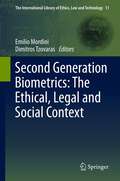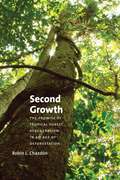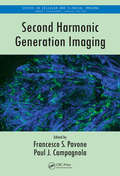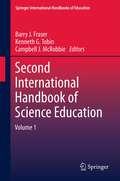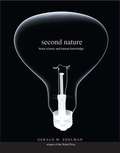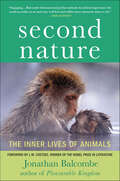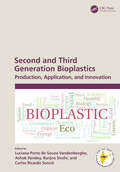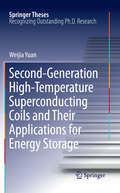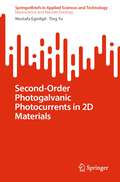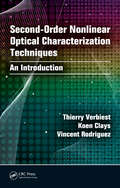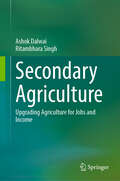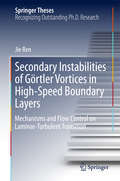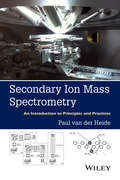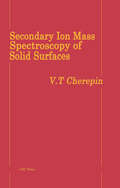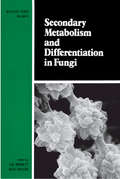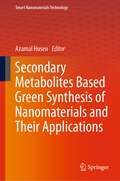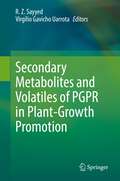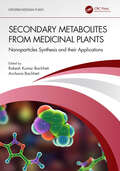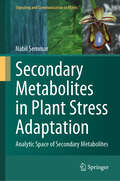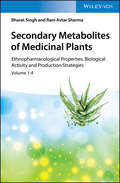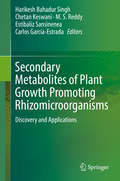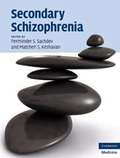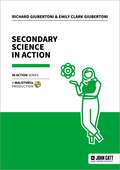- Table View
- List View
Second Generation Biometrics: The Ethical, Legal and Social Context
by Dimitros Tzovaras Emilio MordiniWhile a sharp debate is emerging about whether conventional biometric technology offers society any significant advantages over other forms of identification, and whether it constitutes a threat to privacy, technology is rapidly progressing. Politicians and the public are still discussing fingerprinting and iris scan, while scientists and engineers are already testing futuristic solutions. Second generation biometrics - which include multimodal biometrics, behavioural biometrics, dynamic face recognition, EEG and ECG biometrics, remote iris recognition, and other, still more astonishing, applications - is a reality which promises to overturn any current ethical standard about human identification. Robots which recognise their masters, CCTV which detects intentions, voice responders which analyse emotions: these are only a few applications in progress to be developed. This book is the first ever published on ethical, social and privacy implications of second generation biometrics. Authors include both distinguished scientists in the biometric field and prominent ethical, privacy and social scholars. This makes this book an invaluable tool for policy makers, technologists, social scientists, privacy authorities involved in biometric policy setting. Moreover it is a precious instrument to update scholars from different disciplines who are interested in biometrics and its wider social, ethical and political implications.
Second Growth: The Promise of Tropical Forest Regeneration in an Age of Deforestation
by Robin L. ChazdonFor decades, conservation and research initiatives in tropical forests have focused almost exclusively on old-growth forests because scientists believed that these "pristine” ecosystems housed superior levels of biodiversity. With Second Growth, Robin L. Chazdon reveals those assumptions to be largely false, bringing to the fore the previously overlooked counterpart to old-growth forest: second growth. Even as human activities result in extensive fragmentation and deforestation, tropical forests demonstrate a great capacity for natural and human-aided regeneration. Although these damaged landscapes can take centuries to regain the characteristics of old growth, Chazdon shows here that regenerating--or second-growth--forests are vital, dynamic reservoirs of biodiversity and environmental services. What is more, they always have been. With chapters on the roles these forests play in carbon and nutrient cycling, sustaining biodiversity, providing timber and non-timber products, and integrated agriculture, Second Growth not only offers a thorough and wide-ranging overview of successional and restoration pathways, but also underscores the need to conserve, and further study, regenerating tropical forests in an attempt to inspire a new age of local and global stewardship.
Second Harmonic Generation Imaging
by Francesco S. Pavone Paul J. CampagnolaSecond-harmonic generation (SHG) microscopy has shown great promise for imaging live cells and tissues, with applications in basic science, medical research, and tissue engineering. Second Harmonic Generation Imaging offers a complete guide to this optical modality, from basic principles, instrumentation, methods, and image analysis to biomedical a
Second International Handbook of Science Education
by Campbell J. Mcrobbie Barry J. Fraser Kenneth TobinThe International Handbook of Science Education is a two volume edition pertaining to the most significant issues in science education. It is a follow-up to the first Handbook, published in 1998, which is seen as the most authoritative resource ever produced in science education. The chapters in this edition are reviews of research in science education and retain the strong international flavor of the project. It covers the diverse theories and methods that have been a foundation for science education and continue to characterize this field. Each section contains a lead chapter that provides an overview and synthesis of the field and related chapters that provide a narrower focus on research and current thinking on the key issues in that field. Leading researchers from around the world have participated as authors and consultants to produce a resource that is comprehensive, detailed and up to date. The chapters provide the most recent and advanced thinking in science education making the Handbook again the most authoritative resource in science education.
Second Nature: Brain Science and Human Knowledge
by Gerald M. EdelmanBurgeoning advancements in brain science are opening up new perspectives on how we acquire knowledge. Indeed, it is now possible to explore consciousness-the very center of human concern-by scientific means. In this illuminating book, Dr. Gerald M. Edelman offers a new theory of knowledge based on striking scientific findings about how the brain works. And he addresses the related compelling question: Does the latest research imply that all knowledge can be reduced to scientific description? Edelman's brain-based approach to knowledge has rich implications for our understanding of creativity, of the normal and abnormal functioning of the brain, and of the connections among the different ways we have of knowing. While the gulf between science and the humanities and their respective views of the world has seemed enormous in the past, the author shows that their differences can be dissolved by considering their origins in brain functions. He foresees a day when brain-based devices will be conscious, and he reflects on this and other fascinating ideas about how we come to know the world and ourselves.
Second Nature: The Inner Lives of Animals (MacSci)
by Jonathan BalcombeFor centuries we believed that humans were the only ones that mattered. The idea that animals had feelings was either dismissed or considered heresy. Today, that's all changing. New scientific studies of animal behavior reveal perceptions, intelligences, awareness and social skills that would have been deemed fantasy a generation ago. The implications make our troubled relationship to animals one of the most pressing moral issues of our time. Jonathan Balcombe, animal behaviorist and author of the critically acclaimed Pleasurable Kingdom, draws on the latest research, observational studies and personal anecdotes to reveal the full gamut of animal experience—from emotions, to problem solving, to moral judgment. Balcombe challenges the widely held idea that nature is red in tooth and claw, highlighting animal traits we have disregarded until now: their nuanced understanding of social dynamics, their consideration for others, and their strong tendency to avoid violent conflict. Did you know that dogs recognize unfairness and that rats practice random acts of kindness? Did you know that chimpanzees can trounce humans in short-term memory games? Or that fishes distinguish good guys from cheaters, and that birds are susceptible to mood swings such as depression and optimism? With vivid stories and entertaining anecdotes, Balcombe gives the human pedestal a strong shake while opening the door into the inner lives of the animals themselves.
Second and Third Generation Bioplastics: Production, Application, and Innovation
by Carlos Ricardo Soccol Ashok Pandey Luciana Porto de Souza Vandenberghe Ranjna SirohiThis book provides a comprehensive overview of and state-of-art information on the production and application of second- and third-generation bioplastics, such as polylactic acid (PLA) and polyhydroxyalkanoates (PHAs). The uses of alternative raw materials are presented, and innovations applied in bioplastics production processes to reduce costs and decrease environmental impacts in a circular bioeconomy are discussed.
Second-Generation High-Temperature Superconducting Coils and Their Applications for Energy Storage
by Weijia YuanSecond-Generation High-Temperature Superconducting Coils and Their Applications for Energy Storage addresses the practical electric power applications of high-temperature superconductors. It validates the concept of a prototype energy storage system using newly available 2G HTS conductors by investigating the process of building a complete system from the initial design to the final experiment. It begins with a clear introduction of the related background and then presents a comprehensive design of a superconducting energy storage system that can store maximum energy using a limited length of superconductors. The author has created a modeling environment for analysis of the system and also presents experimental results that are highly consistent with his theoretical calculations.
Second-Order Photogalvanic Photocurrents in 2D Materials (SpringerBriefs in Applied Sciences and Technology)
by Ting Yu Mustafa EginligilThis book highlights the photogalvanic effects at low dimensions, surfaces, and interfaces, more specifically 2D materials, such as graphene and monolayer transition metal dichalcogenides. Although the phenomenology of the photogalvanic effects, which can be simply seen as photoresponse nonlinear-in-electric field, have been well-established, the microscopic understanding in each material system may vary. This book is a quick reference and a detailed roadmap starting from phenomenology and continuing with the ultimate low dimensional materials, in which the photogalvanic effects can offer a rich platform at the second-order response to an electric field. A general phenomenology of photogalvanic effect is provided in the first chapter, together with the photon drag effect which also generates a photocurrent like the photogalvanic effect, but with some distinct features, as well as somewhat puzzling similarities. Next two chapters explain these effects in graphene, starting with a necessary related background on graphene, then a particular focus on its specific phenomenology, microscopic theory, and experimental results. In a similar fashion, in chapters four and five, a necessary background for the photogalvanic effects in monolayer transition metal dichalcogenides, with symmetry analysis, microscopic theory, and experimental results is presented, along with the Berry curvature dependent photocurrent, which can also play an important role in 2D semiconductors. The second-order photogalvanic effects that have been covered so far in graphene and monolayer transition metal chalcogenides have already excited the 2D semiconductor optoelectronic research community by several means. It seems that the interests on the photogalvanic effects will continue to escalate in near future.
Second-order Nonlinear Optical Characterization Techniques: An Introduction
by Thierry Verbiest Koen Clays Vincent RodriguezAlthough chemists, biochemists, biologists, and material scientists are often interested in using nonlinear optical techniques for characterizing their samples, they seldom have the necessary background to exploit these methods. Designed for nonspecialists, Second-Order Nonlinear Optical Characterization Techniques: An Introduction focuses on the p
Secondary Agriculture: Sustainability and Livelihood in India
by Syed Sheraz Mahdi F. A. Bahar M. Anwar BhatThis book on ‘Secondary Agriculture’ discusses the goal of doubling farmers’ incomes. The term ‘secondary’ has a bearing on climate change adaptation and its mitigation, small farm viability and profitability, food security, nutrition, sustainable utilization of natural resources, and optimal usage of produce from primary agriculture and farm incomes. Promoting secondary agriculture has implications on attaining sustainable development goals, which aim to connect primary, secondary and tertiary sectors by using slack/idle factors of production, such as land and labour, contributing to primary agriculture production, capturing ‘value’ in primary agricultural activities, and generating additional income at the enterprise level. In context to same, the chapters of this book have been designed to promote secondary agriculture through low-cost skills and technology applications in agriculture and by upscaling knowledge via integrating primary, secondary and tertiary sectors of agriculture. The motivation behind this book is to address the challenges of biotic and abiotic stresses facing the farming community; to increase farmers income through low-cost skills and technology applications in agriculture; to upscale knowledge by integrating primary, secondary and tertiary sectors of agriculture. The food processing sector in India is still in a nascent stage with only 8 per cent of the produce being processed as against 80-98 per cent in case of high-income countries (Government of India, 2008, 2010). The food processing sector is now receiving the boost with the annual growth of 13.2 per cent in registered food processing units during 2004-10 (Government of India, 2011). Against this backdrop, there is a strong need to strategically handle the situation in order to facilitate a self-sustainable and long-run growth of the sector, which is felt possible by focusing on Secondary Agriculture. Though not a panacea for all ailments of the primary sector, but it can definitely drive the growth.
Secondary Agriculture: Upgrading Agriculture for Jobs and Income
by Ashok Dalwai Ritambhara SinghA first of its kind, this authored book marshals data and logic that necessitate the agriculture sector to transcend beyond its conventional role of securing food, fodder, and feed. It examines India's growing working population and juxtaposes it with the declining labour demand in the secondary and tertiary sectors of the economy, on account of the deployment of disruptive suite of labour-substituting technologies. Therefore, the conventional developmental models that hypothesize the shifting of surplus manpower from agriculture to non-agricultural sectors may not stand the test of scrutiny in the twenty-first century. Hence, the need for remandating the agricultural sector to generate gainful jobs and supplementary incomes in an ecologically synchronous manner for sustainability. The book draws the readers' attention to the importance of bioeconomy and circular economy. To enhance the biologically dependent cumulative agri-output, it recommends the adoption of supplementary and complementary activities. These interventions, along with processing (food and non-food), aid in minimizing food loss, enhancing value capture in favour of the farmers and other value chain stakeholders, and creating gainful jobs and linked incomes resulting in higher enterprise-profits. This progresses the agricultural sector into a bioeconomy anchored around secondary agriculture. Agri-processing being integral to secondary agriculture can be practiced at various scales beginning from micro to small to medium to large. The book highlights both the scope for such enterprises in India and the challenges they are vulnerable to. In the context of sub-par levels of jobs and income in the farm sector, the book emphasizes on micro-enterprises, and suggests the clusterization of entrepreneurs and digitalization along the value chain to achieve competitiveness. The book also deliberates on market-led production matrix, and value chain-based extension services to meet the feedstock demands of secondary agriculture. This book is of relevance to a range of individuals and organizations concerned with agriculture. They include academics, researchers, professionals, universities, domestic & international organizations, bankers & financial institutions, FPOs, entrepreneurs, policymakers, and students.
Secondary Instabilities of Görtler Vortices in High-Speed Boundary Layers
by Jie RenThis thesis first reveals the mechanism of Görtler instabilities and then demonstrates how transitions at hypersonic flows can be effectively controlled (either promoted or suppressed) with Görtler or Klebanoff modes. It focuses on understanding and controlling flow transitions from mild laminar to fully turbulent flows at high speeds—aspects that have become crucial at the dawn of an incredible era, in which hypersonic vehicles are becoming available. Once this occurs, it will be possible to travel from Beijing to Los Angeles within just 2 hours, and we will all live in a genuinely global village—and not just virtually, but physically.Görtler instabilities have often been used to promote flow transition in hypersonic vehicles. However, how Görtler instabilities are excited and how they evolve in hypersonic flows are questions that have yet to be answered.
Secondary Ion Mass Spectrometry
by Paul van der HeideServes as a practical reference for those involved in Secondary Ion Mass Spectrometry (SIMS) * Introduces SIMS along with the highly diverse fields (Chemistry, Physics, Geology and Biology) to it is applied using up to date illustrations * Introduces the accepted fundamentals and pertinent models associated with elemental and molecular sputtering and ion emission * Covers the theory and modes of operation of the instrumentation used in the various forms of SIMS (Static vs Dynamic vs Cluster ion SIMS) * Details how data collection/processing can be carried out, with an emphasis placed on how to recognize and avoid commonly occurring analysis induced distortions * Presented as concisely as believed possible with All sections prepared such that they can be read independently of each other
Secondary Ion Mass Spectroscopy of Solid Surfaces
by V. CherepinThis volume is devoted to the physics, instrumentation and analytical methods of secondary ion mass spectroscopy (SIMS) in relation to solid surfaces. It describes modern models of secondary ion formation and the factors influencing sensitivity of measurements and the range of applications. All the main parts of SIMS instruments are discussed in detail. Emphasising practical applications the book also considers the methods and analytical procedures for constitutional analysis of solids --- including metals, semiconductors, organic and biological samples. Methods of depth profiling, spatially multidimensional analysis and study of processes at the surface, such as adsorption, catalysis and oxidation, are given along with the application of SIMS in combination with other methods of surface analysis.
Secondary Metabolism and Differentiation in Fungi
by BennettThe first source to unite secondary fungal metabolism and morphogenesis in one volume, Secondary Metabolism and Differentiation in Fungi treats biological systems as parts of a whole rather than as a series of individual elements, highlighting research in genetics, molecular biology, and ecology. Featuring the expertise of 19 international authorities, each chapter is a rich source of experimentation ideas. The book facilitates the application of novel techniques to existing problems in molecular mycology and explores potentials for major new research. This indispensable guide to a key scientific field benefits biologists, chemists, and other scientists.
Secondary Metabolites Based Green Synthesis of Nanomaterials and Their Applications (Smart Nanomaterials Technology)
by Azamal HusenNanotechnology is gaining importance in every field of science and technology. Green synthesis of nanomaterials involves the use of microorganisms such as bacteria, fungi, viruses; and different lower and higher plants. Green synthesis of nanomaterials from plant extracts becoming popular in comparison to synthesis using microorganisms. Plant based-nanomaterials synthesis is easy, have no need to bring back from the culture medium, and is safe. Additionally, plant-based nanomaterials are eco-friendly, in comparison to physical and chemical modes of synthesis. Several lower and higher plants are rich in terms of secondary metabolites. These metabolites have been used as medicine in crude extract form or with some other formulations. They have been also used to isolate the bioactive compounds in modern medicine as well as in herbal medicine systems. Thus, phytochemicals present in the plant and their parts play an important role in nanomaterials synthesis, mainly due to the presence of a significant number of secondary metabolites, for instance, alkaloids, flavonoids, saponins, steroids, tannins, etc. Further, essential and aromatic oils have been also explored for nanomaterials synthesis, and they are also equally useful in terms of their various biological applications. These organic ingredients come from a wide range of plant components, such as leaves, stems, roots, shoots, flowers, bark, and seeds. Globally, the presence of different plants has shown a capability to produce huge and diverse groups of secondary metabolites. The functional groups present in the plant extract acts as capping and stabilizing agent. Most of the time, pure isolated bioactive compounds are more biologically active; hence scholars are focusing their research on the synthesis of nanomaterials using some particular class of secondary metabolites. Investigations have shown that the green synthesized nanomaterials were found to be more biologically active in comparison to chemically synthesized nanomaterials. These nanomaterials and or nanocomposites found different applications especially in drug delivery, detection and cure of cancer cells, diagnosis of a genetic disorder, photoimaging, and angiogenesis detection. They have also shown several applications in agricultural, horticultural as well as forestry sectors. The book in hand covers a wide range of topics as mentioned above. It incorporates chapters that the authors have skilfully crafted with clarity and precision, reviewing up-to-date literature with lucid illustrations. The book would cater to the need of graduate students as a textbook and simultaneously be useful for both novices and experienced scientists and or researchers working in the discipline of nanotechnology, nanomedicine, medicinal plants, plant science, economic botany, chemistry, biotechnology, pharmacognosy, pharmaceuticals, industrial chemistry, and many other interdisciplinary subjects. It should also inspire industrialists and policy makers associated with plant-based nano products.
Secondary Metabolites and Volatiles of PGPR in Plant-Growth Promotion
by R. Z. Sayyed Virgilio Gavicho UarrotaThis contributed volume explores how plant growth-promoting rhizobacterias (PGPR) provide a wide range of benefits to the plant. Further, it discusses the key roles PGPR play in nutrient acquisition and assimilation, improved soil texture, secreting, and modulating extracellular molecules. The book outlines how plant secondary metabolites are natural sources of biologically active compounds used in a wide range of applications, and surveys the significant role of volatile organic compounds (VOCs) in plant communication by mediating above- and below-ground interactions between plants and the surrounding organisms.This volume compiles research from leading scientists from across the globe, linking the translation of basic knowledge to innovative applied research. The book focuses on the following three categories: 1) understanding the secondary metabolites produced by PGPR, the signaling mechanisms and how they affect plant growth, 2) the plausible role of volatile organic compounds produced by PGPR, their role and the signaling mechanism for plant growth promotion, and 3) Applications of VOCs and secondary metabolites of PGPR for seed germination, plant growth promotion; stress tolerance and in-plant health and immunity.
Secondary Metabolites from Medicinal Plants: Nanoparticles Synthesis and their Applications (Exploring Medicinal Plants)
by Rakesh Kumar Bachheti and Archana BachhetiMedicinal plant-based synthesis of nanoparticles from various extracts is easy, safe, and eco-friendly. Medicinal and herbal plants are the natural source of medicines, mainly due to the presence of secondary metabolites, and have been used as medicine since ancient times. Secondary Metabolites from Medicinal Plants: Nanoparticles Synthesis and their Applications provides an overview on medicinal plant-based secondary metabolites and their use in the synthesis of different types of nanoparticles. It explores trends in growth, characterization, properties, and applications of nanoparticles from secondary metabolites including terpenoids, alkaloids, flavonoids, and phenolic compounds. It also explains the opportunities and future challenges of secondary metabolites in nanoparticle synthesis. Nanotechnology is a burgeoning research field, and due to its widespread application in almost every branch of science and technology, it creates many new opportunities. As part of the Exploring Medicinal Plants series, this book will be of huge benefit to plant scientists and researchers as well as graduates, postgraduates, researchers, and consultants working in the field of nanoparticles.
Secondary Metabolites in Plant Stress Adaptation: Analytic Space of Secondary Metabolites (Signaling and Communication in Plants)
by Nabil SemmarThis book covers correlation and combined disciplinary aspects implying the use of secondary metabolites (SMs) of different plant species for control and monitoring of environment states. Phytochemical management of ecological systems represents an integrative field aiming for determination/evaluation of environment conditions from qualitative and quantitative analysis of plant metabolites. Plants respond to environmental conditions through productions of secondary metabolites. SMs represent highly variable and sensitive phytocompounds because of their small produced amounts, high structural variability and diversified activities. These characteristics make variations of SMs in plants to be highly informative on environmental conditions, physiological states and biological interactions. Qualitative and quantitative variations of SMs in plants are subject to correlation analyses to highlight links between biotic/abiotic conditions and plant chemical patterns.
Secondary Metabolites of Medicinal Plants: Ethnopharmacological Properties, Biological Activity and Production Strategies
by Bharat Singh Ram Avtar SharmaCovers the structurally diverse secondary metabolites of medicinal plants, including their ethnopharmacological properties, biological activity, and production strategies Secondary metabolites of plants are a treasure trove of novel compounds with potential pharmaceutical applications. Consequently, the nature of these metabolites as well as strategies for the targeted expression and/or purification is of high interest. Regarding their biological and pharmacological activity and ethnopharmacological properties, this book offers a comprehensive treatment of 100 plant species, including Abutilon, Aloe, Cannabis, Capsicum, Jasminum, Malva, Phyllanthus, Stellaria, Thymus, Vitis, Zingiber, and more. It also discusses the cell culture conditions and various strategies used for enhancing the production of targeted metabolites in plant cell cultures. Secondary Metabolites of Medicinal Plants: Ethnopharmacological Properties, Biological Activity and Production Strategies is presented in four parts. Part I provides a complete introduction to the subject. Part II looks at the ethnomedicinal and pharmacological properties, chemical structures, and culture conditions of secondary metabolites. The third part examines the many strategies of secondary metabolites production, including: biotransformation; culture conditions; feeding of precursors; genetic transformation; immobilization; and oxygenation. The last section concludes with an overview of everything learned. -Provides information on cell culture conditions and targeted extraction of secondary metabolites confirmed by relevant literature -Presents the structures of secondary metabolites of 100 plant species together with their biological and pharmacological activity -Discusses plant species regarding their distribution, habitat, and ethnopharmacalogical properties -Presents strategies of secondary metabolites production, such as organ culture, pH, elicitation, hairy root cultures, light, and mutagenesis Secondary Metabolites of Medicinal Plants is an important book for students, professionals, and biotechnologists interested in the biological and pharmacological activity and ethnopharmacological properties of plants.
Secondary Metabolites of Plant Growth Promoting Rhizomicroorganisms: Discovery and Applications
by Harikesh Bahadur Singh Estibaliz Sansinenea Carlos García-Estrada Chetan Keswani M. S. ReddyRecent changes in the pattern of agricultural practices from use of hazardous pesticides to natural (organic) cultivation has brought into focus the use of agriculturally important microorganisms for carrying out analogous functions. The reputation of plant growth promoting rhizomicroorganisms (PGPRs) is due to their antagonistic mechanisms against most of the fungal and bacterial phytopathogens. The biocontrol potential of agriculturally important microorganisms is mostly attributed to their bioactive secondary metabolites. However, low shelf life of many potential agriculturally important microorganisms impairs their use in agriculture and adoption by farmers. The focal theme of this book is to highlight the potential of employing biosynthesized secondary metabolites (SMs) from agriculturally important microorganisms for management of notorious phytopathogens, as a substitute of the currently available whole organism formulations and also as alternatives to hazardous synthetic pesticides. Accordingly, we have incorporated a comprehensive rundown of sections which particularly examine the SMs synthesized, secreted and induced by various agriculturally important microorganisms and their applications in agriculture. Section 1 includes discussion on biosynthesized antimicrobial secondary metabolites from fungal biocontrol agents. This section will cover the various issues such as development of formulation of secondary metabolites, genomic basis of metabolic diversity, metabolomic profiling of fungal biocontrol agents, novel classes of antimicrobial peptides. The section 1 will also cover the role of these secondary metabolites in antagonist-host interaction and application of biosynthesized antimicrobial secondary metabolites for management of plant diseases. Section 2 will discuss the biosynthesized secondary metabolites from bacterial PGPRs, strain dependent effects on plant metabolome profile, bio-prospecting various isolates of bacterial PGPRs for potential secondary metabolites and non-target effects of PGPR on microbial community structure and functions. Section 3 encompasses synthesis of antimicrobial secondary metabolites from beneficial endophytes, bio-prospecting medicinal and aromatic hosts and effect of endophytic SMs on plants under biotic and biotic stress conditions.
Secondary Schizophrenia
by Perminder S. Sachdev Matcheri S. KeshavanSchizophrenia may not be a single disease, but the result of a diverse set of related conditions. Modern neuroscience is beginning to reveal some of the genetic and environmental underpinnings of schizophrenia; however, an approach less well travelled is to examine the medical disorders that produce symptoms resembling schizophrenia. This book is the first major attempt to bring together the diseases that produce what has been termed 'secondary schizophrenia'. International experts from diverse backgrounds ask the questions: does this medical disorder, or drug, or condition cause psychosis? If yes, does it resemble schizophrenia? What mechanisms form the basis of this relationship? What implications does this understanding have for aetiology and treatment? The answers are a feast for clinicians and researchers of psychosis and schizophrenia. They mark the next step in trying to meet the most important challenge to modern neuroscience - understanding and conquering this most mysterious of human diseases.
Secondary Science 11 to 16: A Practical Guide
by Gren Ireson Mark Crowley Ruth L. Richards John TwidleAre you looking for teaching ideas to make your science lessons come alive? Full of suggestions for exciting practical work to engage children, this book addresses and explains the science behind the experiments, and emphasises the need to engage the learner through minds-on activities. It shows you where to make links to the national curricula in England, Scotland, Wales and Northern Ireland, and it covers the three sciences: chemistry, biology and physics. The detailed subject knowledge helps you grasp key concepts, and there are lots of useful diagrams to illustrate important points. Experiments include: - extracting DNA from a kiwi fruit - capturing rainbows - the chromatography of sweets - removing iron from cornflakes - a plate tectonic jigsaw These practical activities will provide you with ways to ensure your students respond enthusiastically to science, and the book will also help you develop your subject knowledge and ensure you meet your Qualified Teacher Status (QTS) standards. Perfect reading for Secondary Science PGCE students, as well as those on the Graduate Teacher Programme (GTP), this book is also ideal for non-specialists who are looking for support as they get to grips with the sciences. Gren Ireson is Professor of Science Education at Nottingham Trent University. Mark Crowley is a Teaching Research Fellow in the Centre for Effective Learning in Science, Nottingham Trent University. Ruth Richards is Subject Strand Leader for the PGCE and Subject Knowledge Enhancement (SKE) courses in Science at Nottingham Trent University, and an examiner for A-level Geology. John Twidle is Subject Leader for the PGCE and MSc Science programmes at Loughborough University.
Secondary Science in Action
by Emily Clark Giubertoni Richard GiubertoniThere is nothing more exciting in science teaching than transforming students into effective, enthusiastic biologists, chemists and physicists. To this end, this book spells out the skills and strategies of the successful science teacher in action.Drawing on years of teaching experience, Richard and Emily Giubertoni set out top tips for effective practice in all areas of a science teacher's role, from curriculum planning to managing practicals, from powerful hinterland stories to how to approach controversial topics.The useful approaches set out in this book will have value for science teachers at all stages of their careers, from trainee teachers to department leaders.Being an effective teacher is not innate: we can all learn to teach, to teach well, and to teach better. In this thoroughly comprehensive overview of science teaching in action, all science teachers will find ideas to strengthen, inspire and further develop their teaching practice, in a practical and pragmatic book that is enjoyable and engaging to read.
